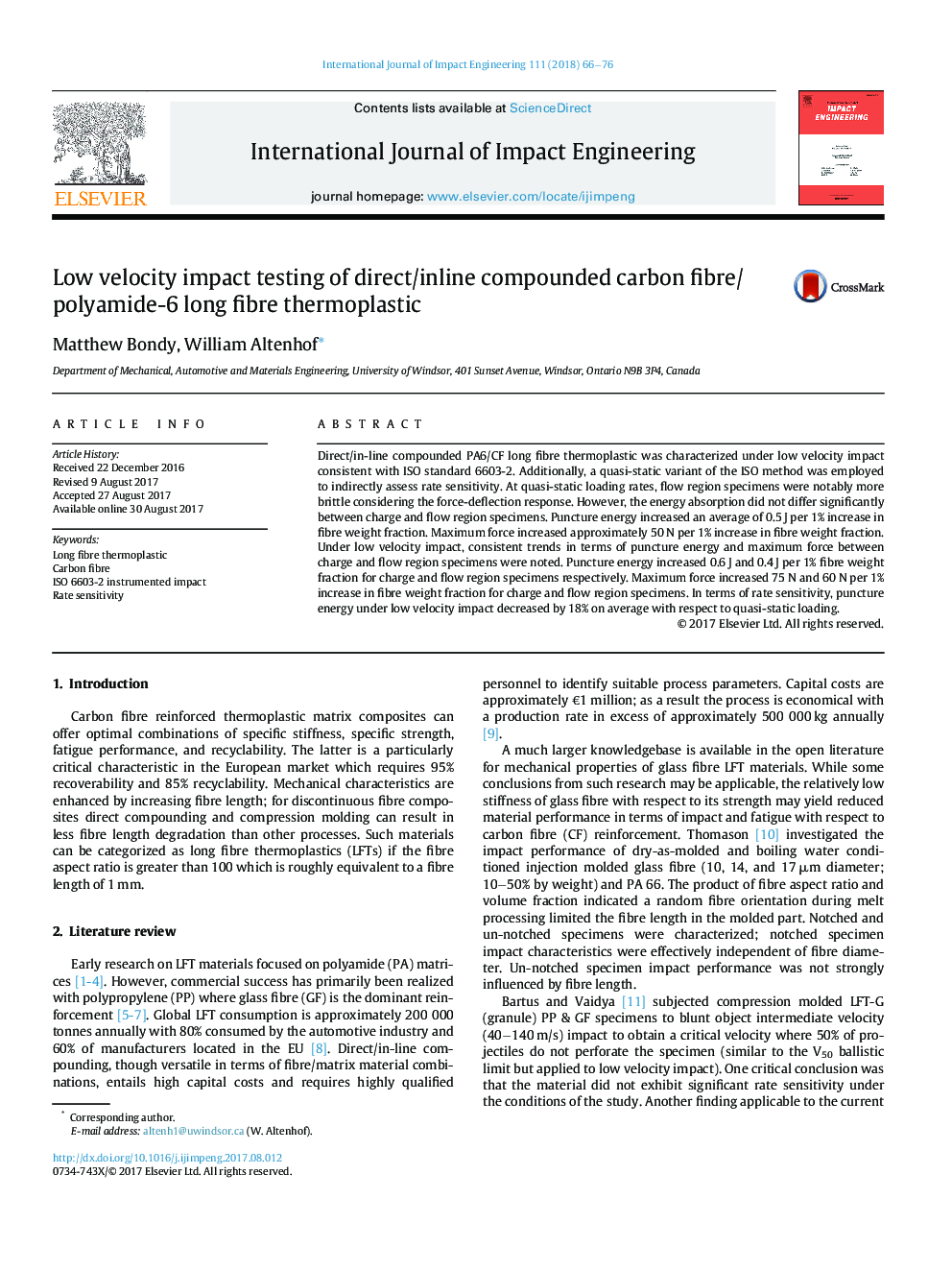| Article ID | Journal | Published Year | Pages | File Type |
|---|---|---|---|---|
| 5015399 | International Journal of Impact Engineering | 2018 | 11 Pages |
â¢PA6/CF LFT-D was characterized (quasi-static and low velocity impact) consistent with ISO 6603-2.â¢At quasi-static loading rates, flow region specimens were notably more brittle.â¢Quasi-static puncture energy increased an average of 0.5â¯J per 1% increase in fibre weight fraction.â¢Impact puncture energy increased 0.6â¯J and 0.4â¯J per 1% fibre weight fraction for charge/flow specimens.
Direct/in-line compounded PA6/CF long fibre thermoplastic was characterized under low velocity impact consistent with ISO standard 6603-2. Additionally, a quasi-static variant of the ISO method was employed to indirectly assess rate sensitivity. At quasi-static loading rates, flow region specimens were notably more brittle considering the force-deflection response. However, the energy absorption did not differ significantly between charge and flow region specimens. Puncture energy increased an average of 0.5â¯J per 1% increase in fibre weight fraction. Maximum force increased approximately 50â¯N per 1% increase in fibre weight fraction. Under low velocity impact, consistent trends in terms of puncture energy and maximum force between charge and flow region specimens were noted. Puncture energy increased 0.6â¯J and 0.4â¯J per 1% fibre weight fraction for charge and flow region specimens respectively. Maximum force increased 75 N and 60 N per 1% increase in fibre weight fraction for charge and flow region specimens. In terms of rate sensitivity, puncture energy under low velocity impact decreased by 18% on average with respect to quasi-static loading.
